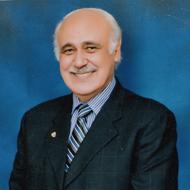
This is a speech on the plurality of ‘Pakistani Culture’ delivered by a renowned Pakistani intellectual and aesthete, Fakir Syed Aijazuddin, to a group of senior Pakistani bureaucrats dealing with culture.
How many of you have read the book Pakistan Culture?
My reason for using it is that it has been co-authored by four eminent PhDs – Jamil Jalibi (vice-chancellor, Karachi University), Ansar Zahid Khan, Abdur Rehman of Peshawar University, and M.H. Siddiqui (Department of History, Karachi University), who also edited the book.
Its foreword is written by Saeed Ahmed Qureshi, the former education secretary [of Pakistan].
Because it was published last year by the National Book Foundation, one would imagine it has a higher level of authenticity than most books of a similar genre.
The book defines culture as having four components:
- A civilised state of life, as typified in manners and bearings, behaviour and conduct.
- Progressive growth and improvement, refinement and elegance in the moral (spiritual) and material spheres of life of the people or society.
- A mode of living together, representing all elements, forms and patterns of social life.
- A state of mind and intellect necessary for developing skill in arts and sciences, reflecting the psyche and genius of the people.
A culture raises human beings above the animal condition. It is never static. It is dynamic. A prerequisite, though, is tolerance and forbearance.
The book describes Pakistan as ‘a museum of races’, and then narrows it to being a Muslim society with essentially an Islamic culture with Islamic values.
At this point, I stand at variance with the authors, distinguished though they may be.
How can historians like them jump from the Stone Age (Potohar) to the Bronze Age to the Indus Valley civilisation? What about the Vedic age?
How can they argue that the Aryans defeated the locals and then had to defend themselves against the Persians, the Greeks and other invaders from the north?
They speak of Buddhism as a religion that persisted for 1,300 years and of Buddhists being liberated by Muhammad bin Qasim.
They speak of Islam sweeping away the debris of decaying systems’ persecution, evicting them from the mainland of India. The spread of Islam across the subcontinent was ‘not merely a material conquest but also a conquest of the spirit’.
According to these scholars, the Hindu bhakti cults of the 12th to 15th centuries sought to ‘wean away the Muslims from the right path’ (Shariah). The Ulema and the Sufis frustrated these nefarious moves.
It was when the book referred to the Hindu community in Pakistan as ‘mostly low caste’ and dismissed the Qadianis as having a meagre following in Punjab with its centre located at Rabwah.
I gave up at page 67, and I still had 177 pages to read.
So what is Pakistani culture? Is it linear with jumps over inconvenient truths?
Or is it a rational continuum that acknowledges realities which may not be acceptable to some amongst us?
To me, culture is too multifaceted to fit into a single prism.
It is not simply the residue of past civilisations. It is the tangible evidence like shards and sculpture, manuscripts and monuments, unwritten melodies and unrecorded music.
I am a Muslim. That is my faith.
I am a Pakistani. That is my political identity.
And I am a Punjabi. That is my cultural inheritance. It owes everything to Harappa, to Buddhism, to Gandhara, to Hinduism, to Jainism, to Islam, and to Sikhism. They are all woven inextricably into my DNA.

The archaeological site of Harappa, of the Indus Valley civilisation. Photo: Sara jilani/Wikimedia Commons, CC BY-SA 3.0
I am not one but all of these.
I am a living human pyramid, assembled from countless stones of past and present experience.
The capstone of this pyramid has to be tolerance, for as one philosopher said: “A multicultural society does not reject the culture of the other but is prepared to listen, to see, to dialogue and, in the final analysis, to possibly accept the other’s culture without compromising its own.”
Tolerance – not bigotry – distinguishes us as species from other animals.
We should not feel threatened by other cultures and beliefs. We stand enriched, not diminished by them.
Let me end on a personal note.
Many years ago, in 1966 to be precise, I was mad enough to catalogue over 500 Pahari miniature paintings in the Lahore Museum collection. They belonged from the 16th century to the 19th century, and emanated from the Punjab Hill states like Kangra Guler, Basohli, Chamba, etc.

Lahore museum. Courtesy: Sandeep Raina
They were primarily Hindu in subject matter. They were illustrations of sacred texts such as the Bhagavata Purana, the Ramayana, the Gita Govinda, and the Devi Mahatmya.
The book was finally published 11 years later in London, as no one here [in Pakistan] wanted to publish it.
When its first volume reached Lahore, I took it to my mother. She looked at its illustrations, stroked its cover lovingly, and then said: “Beta, could you not have written something on Islam instead?’’
There, I thought, lies our national conundrum. Numerous rivers of religion, culture, language, and literature flow into an Indus, which we want to taste like Islam.






